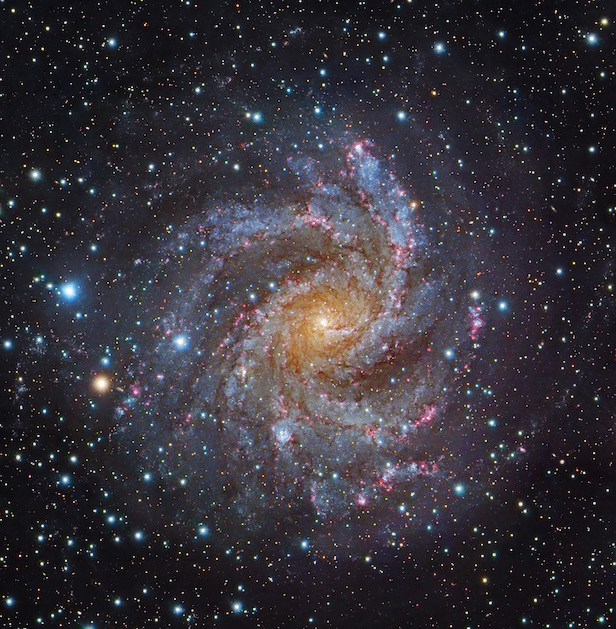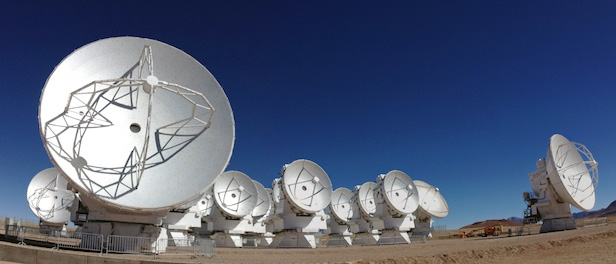Early galaxies found to rotate like whirlpools
The gas within the galactic structures, which were formed less then a billion years after the Big Bang, have been discovered to have a ‘swirling’ behaviour

The newborn galaxies in this study were formed within the first 800 million years of the universe. Image credit: NAOJ/R. Gendler
By looking at some of the youngest galaxies in the universe, formed soon after the Big Bang, astronomers have discovered swirling gas within their structures. Having being formed nearly 13 billion years ago, these newborn structures appear to spin like a whirlpool, similar to our Milky Way. This is the first time such a motion has been detected at an early stage of the cosmos’ history.
This study was led by Dr Renske Smit of the Kavli Institute of Cosmology at the University of Cambridge, where they used the Atacama Large Millimetre/submillimetre Array (ALMA) in Chile. Using this telescope array, Smit and collaborators were able to detect normal star-forming galaxies within the first billion years after the Big Bang.
These galaxies are incredibly distant, which means by the time their light reaches us, it would have travelled for billions of years. This distant light allows astronomers to see what the galaxy was like at an early age, and in this case, it told Smit what these galaxies were like 800 years after the beginning of the universe. It is normally incredibly difficult to deduce such information as space at this time was shrouded by neutral hydrogen gas, making it difficult to observe in optical light.
ALMA was able to observe the two newborn galaxies’ far-infrared light, and study their ‘spectra’. A galaxy’s spectrum is like a chemical fingerprint, as it’s different elements will absorb light at a certain frequency, and this can be deduced by astronomers to unveil the peculiar motions within these early structures. From this information, ALMA was able to help calculate the distance to the galaxies, and for the first time, observe the internal motion of gas that fuelled their growth.

ALMA consists of 66 radio telescopes in the Atacama Desert in northern Chile. Image credit: ESO
“Until ALMA, we’ve never been able to see the formation of galaxies in such detail, and we’ve never been able to measure the movement of gas in galaxies so early in the Universe’s history,” say Dr Stefano Carniani, from Cambridge’s Cavendish Laboratory and Kavli Institute of Cosmology.
From this analysis, researchers discovered that the gas in these newborn galaxies rotated in a whirlpool motion, which is similar to what happens in our own galaxy and other, more ancient, structures. Although they are five times smaller than the Milky Way, these galaxies form stars at a higher rate than younger galaxies, but the researchers were more surprised to discover that the galaxies were not as chaotic as expected.
“In the early universe, gravity caused gas to flow rapidly into the galaxies, stirring them up and forming lots of new stars – violent supernova explosions from these stars also made the gas turbulent,” says Smit, who is a Rubicon Fellow at Cambridge, sponsored by the Netherlands Organisation for Scientific Research. “We expected that young galaxies would be dynamically ‘messy’, due to the havoc caused by exploding young stars, but these mini-galaxies show the ability to retain order and appear well regulated. Despite their small size, they are already rapidly growing to become one of the ‘adult’ galaxies like we live in today.”
Keep up to date with the latest reviews in All About Space – available every month for just £4.99. Alternatively you can subscribe here for a fraction of the price!




